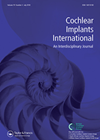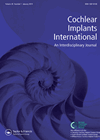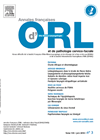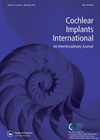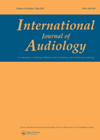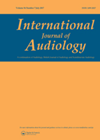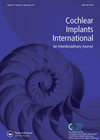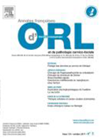
Journal Reviews
Cochlear implantation in children with congenital long QT syndrome
Jervell and Lange-Neilsen syndrome is a condition where sensorineural deafness coincides with inherited abnormalities of the heart, resulting in prolonged ventricular repolarisation, frequently shown on an ECG with a prolonged QT interval. These children can present at implant centres for...
Inter-aural hearing preservation in cochlear implantation
Hearing preservation during cochlear implantation is becoming increasingly important, although results can be unpredictable. NICE are in the process of updating their guidance in the UK and it is possible that those with better hearing than the current candidates will...
Cognition outcomes after cochlear implantation – is there an improvement?
Older adults with a severe to profound hearing loss are more at risk of cognitive decline than adults of a similar age with milder losses or normal hearing. This poses challenges, not only in the assessment process, but also for...
Strategies to improve early development of vocabulary post-cochlear implantation
Cochlear Implantation (CI) is now the standard of care for rehabilitation of children with bilateral severe to profound sensorineural hearing loss. It improves the children’s linguistic input and helps them to develop language. The literature published so far has shown...
Hearing loss and QOL
This article evaluates the impact of hearing loss and its rehabilitation on the quality of life (QoL) of adults. The authors suggest that the currently used scale, Aphab, is long, complicated and does not take into account minor changes. The...
Milestones profile for children with cochlear implant
Over the last eight years, Nottingham auditory implant programme have developed and validated a profile of auditory milestones for use with children receiving bilateral cochlear implants under the age of two years. The structure of the Nottingham Auditory Milestones profile...
Lack of early vocabulary growth in bilateral cochlear implant children
Studies indicate that children with unilateral implantation may have delayed vocabulary development for long periods of time even after implantation. This Finnish study attempted to find out whether bilateral cochlear implantation was associated with earlier vocabulary development. The authors analysed...
Dental implant rehabilitation in fibula free flaps
The fibula free flap was first described in 1975 and since then has gone on to become the gold standard technique for reconstruction of longer spans in the mandible or maxilla. It is a reliable flap that affords good quality...
Use of technological aids and interpretation services
Hearing loss attracts large interest among researchers all over the world due to its prevalence and negative psychological side-effects. Usually hearing loss is managed with hearing aids. However, there are several additional technologies that can be of great help for...
Single sided deafness and cochlear implants
Cochlear implants (CI) can restore hearing in the profoundly deaf ear. Risk/ benefit and cost considerations dictate strict criteria that must be met for patients to be eligible. People with single-sided deafness are not eligible to receive a cochlear implant...
Cochlear implantation in children with cognitive disabilities
Additional disabilities are frequently encountered in children born with hearing loss or deafness. A study from Denmark attempted to systematically review to what extent hearing-impaired children with cognitive disabilities benefit from cochlear implantation. The authors conducted an extensive search in...
CI and CP
Quality of life improvement is one of the main goals of cochlear implantation. Mobile phones are now a standard daily tool. For many implanted patients, a mobile phone is used for sending short messages rather than for voice calls. This...

